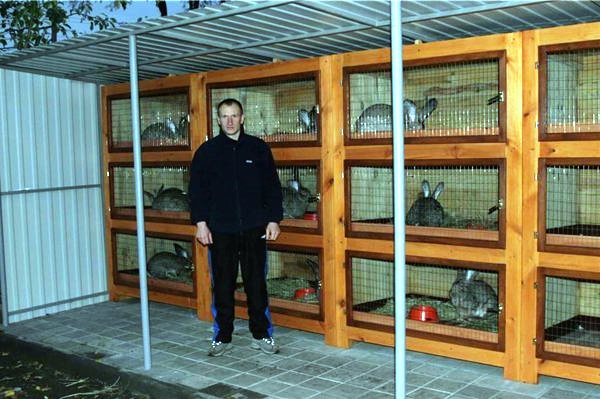Even in our global and technocratic society, where everything can be purchased in a store, subsistence farming does not lose its relevance to this day. The most profitable and low-cost way of livestock raising is rabbit breeding. But, like any living creature, the rabbit must have its own comfortable living corner. These animals are kept in special cages placed in the barn. Every novice rabbit breeder should know how to make a rabbit cage.
Arrangement of the cell
Such a process will not seem time-consuming, if all conditions for the premises for breeding rabbits are maintained. One of the main requirements is compliance with the scale of such buildings. Therefore, the first step is to determine the size of the cages for the rabbits. Even with a small number of animals, one crate will not be enough for all. You need to plan at least three pieces. First you need to prepare drawings of cages for rabbits.

Space required for 1 head
A detailed drawing showing even the smallest design details will provide you with a reliable building.
There are many ways of constructing how to build a rabbitry. Some provide comfort to the animals, others are convenient for the owner in terms of financial costs. Each rabbit breeder chooses the best option himself, based on his capabilities. But, nevertheless, they often make cages for rabbits with their own hands. According to reviews, simple rabbit mesh cages are popular. Such material can be found in any building supermarket, or you can rummage among your old stocks. Consider the process of creating a do-it-yourself rabbit cage from a mesh.
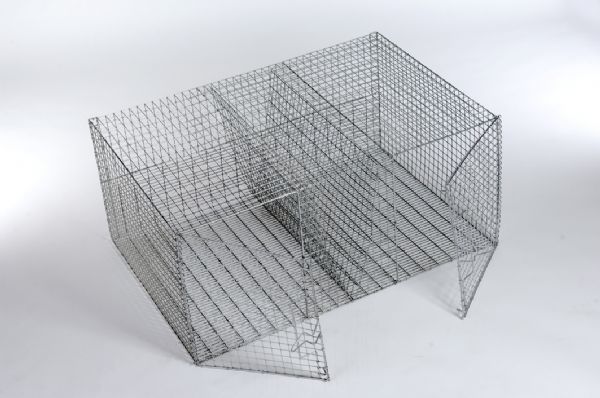
Reticulated rabbitry
There are many varieties of such stands; the following structures have proven themselves best of all:
- unsupported cage with supporting struts;
- frame cells.

Homemade galvanized checkered weaving with strong wire will serve for the manufacture of such structures. The tops and side sections of the cells will be sufficient with a mesh with links of 25x50 mm. The lower part provides for the use of small cells - in order to avoid slipping of the paws of fluffy animals. Once you have determined the dimensions, you can start building.
In our case, the cage will represent an externally mesh structure surrounded by a base with legs.
Step by step manufacturing
The construction of such a structure consists of several stages. Before you make a cage for rabbits with your own hands, you need to cut out certain details of the sides, based on the size.

A pre-made template will help you create the same size front and back, which are neatly cut from the mesh roll. Then the side parts are cut, completely matching along their perimeter.
- The constructed rectangle is covered with a roof, and a mesh with a fine mesh will serve as the base of the floor.
- Initially, the walls are formed by the fasteners.
- Next, the base of the cell is established. At the same time, the netting of the front part of the very first cell is removed. There will be a pallet for animal waste.
- Having outlined the doorway, we form a slot. There may be several of them.
- The doors are also made with mesh and fastened with fasteners.
- A mesh ceiling is laid on top of the resulting box.
- The frame is made separately using wooden blocks. If the dimensional drawings are accurate and exceed the cage itself, our structure will easily fit into its supporting base.
Step-by-step photo instructions
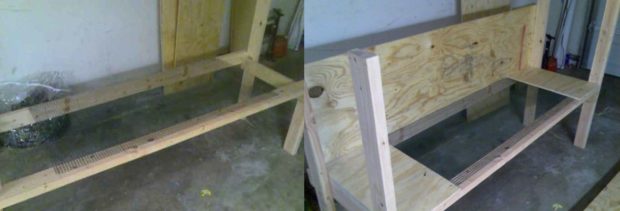
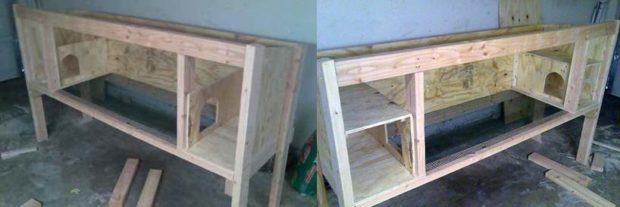

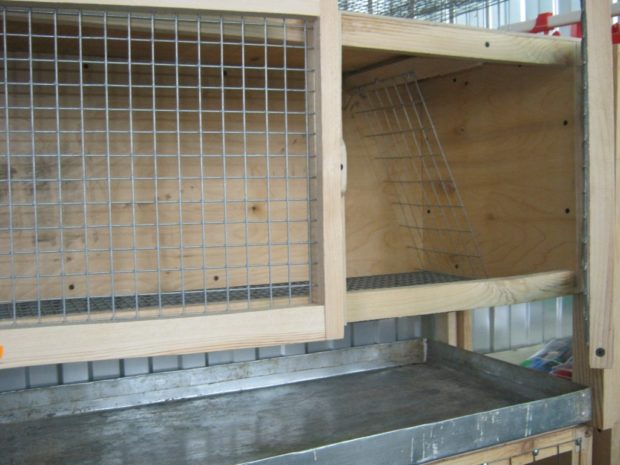
The main work has been completed, now you need to attach the finished structures to the wall with metal parts and put stops - in order to prevent the cage from wobbling when the animals move. The sides and back are covered with plywood sheets, which are cut in relation to the dimensions of the frame, and not the dimensions of the mesh formations. Now it remains to fill the place of detention with the accessories necessary for the life of the rabbits: feeders, drinkers, a pallet, and you can populate the rabbitry with animals. This is the most common way to build a rabbit cage with a netting method.
The rabbitry of Mikhailov
Making cages for rabbits must be thoughtful and serve as a guarantee that the animals will actively develop and gain weight. A popular scheme for such a development belongs to I. N. Mikhailov, a well-known rabbit breeder. Mikhailov's rabbit cages have an accessible and understandable guide to the stages of building their own at home.

Mikhailov's cage is made according to the already developed drawing projects.
The essence of his technique consists in dividing the cage into three parts: top, bottom and support section, each of which has its own functional affiliation. So, the upper part has one or two tiers, the lower base contains a tray for collecting faeces, as well as a compartment where they are stored and stored until they are removed. The base frame is at the same time the fixing base. And the compartments of Mikhailov's cage for rabbits, intended for drinking and feeding, move out a little.
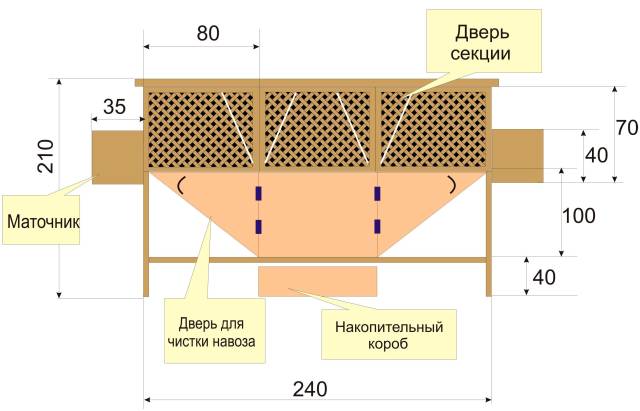
Thanks to this scheme of the place of detention, Mikhailov's rabbitry requires minimal care - about an hour a week, and the animals are kept outdoors all year round.
The housings are mainly made of metal, and wood is used for insulation.
There are simplified versions of such rooms for rabbits, differing in appearance, therefore, we highlight the main features of the ratio of cage sizes according to the Mikhailov method:
- the total area of one section, accommodating a couple of animals, fluctuates within 1.4 sq. m .;
- the height of the cage is 2.1 m, the width is 2.4 m;
- each section of the cell is constructed with a width of 0.6 m and a height of 0.7 m;
- mother liquors are 0.4 m long, 0.35 m wide, the waste collection cone can be of any size.
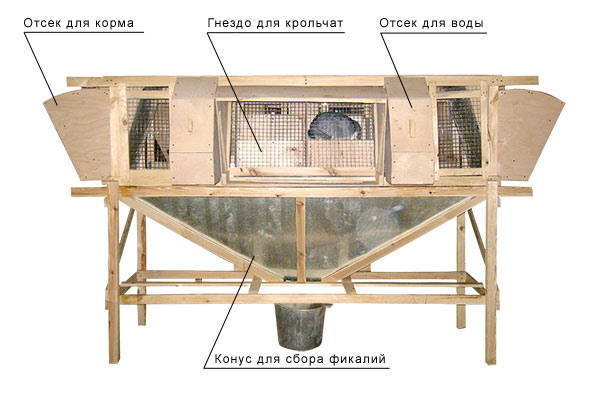
The base in the form of legs on a frame stand reaches a height of 1.4 m. It is necessary to fix the supporting structure with fixing elements. This achieves the necessary stability of even the most simplified design.
Rabbit farm Zolotukhin
One of the most popular today are cages for rabbits Zolotukhin N.I., a person who put forward a number of necessary transformations that bring the conditions for keeping animals at home closer to the natural features of their life. This is how Zolotukhin's cage, economical and quite simple to create, appeared.
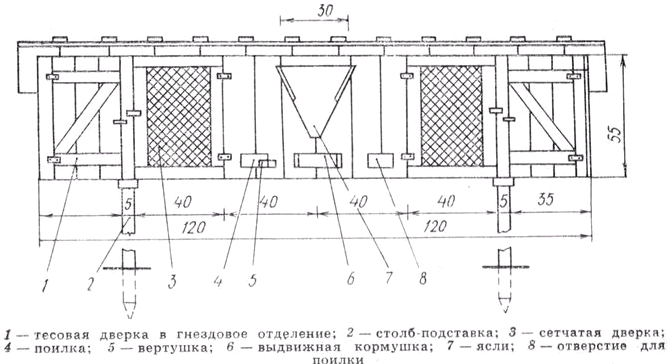
This design saves space, does not require daily cleaning, making it easier for breeders to care for.
Let's highlight the main features of N. Zolotukhin's design option:
- The floor is made using flat slate or a sheet of plywood. The net is only fixed in the floor of the back cover. The pallet is not provided at all. The developer states that rabbits almost always urinate from the back of the cage. Most of the feces are collected there. The rest of the feces are scattered by the rabbits on the floor.
- The building has a complex structure, including six compartments located on floors. Each higher floor is displaced relative to the floor adjacent to the bottom, equal to the width of the grid in the floor. And the front side connecting the floors is a kind of slope.
- The uterus is completely absent. In cold weather, a special shelter is additionally placed for the rabbit and rabbits.
Cleaning is carried out using a goose fan as a sweeping device.
2-tier rabbit cage
The use of multi-storey structures for rabbits at home to this day is the most compact and convenient option for breeding rabbits. There is nothing easier how to build do-it-yourself cages for rabbits in 2 tiers.
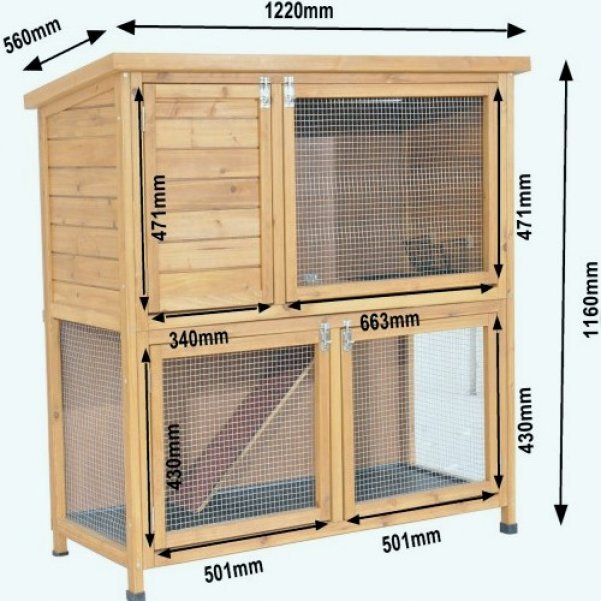
Assembly diagram
Experienced owners have developed a special instruction, the manual of which contains the following provisions:
- wooden blocks are connected, forming four rectangular bases;
- using a mesh with small cells, make the floor, then install the side walls;
- since the first floor contains trays for feces, for the convenience of their removal, the floor is made pitched;
- trays for domestic rabbits are prepared using a bar. The second floor under its base must have a solid plywood sheet to prevent contamination from entering the first floor;
- the ceiling is made at the last moment using waterproof materials.
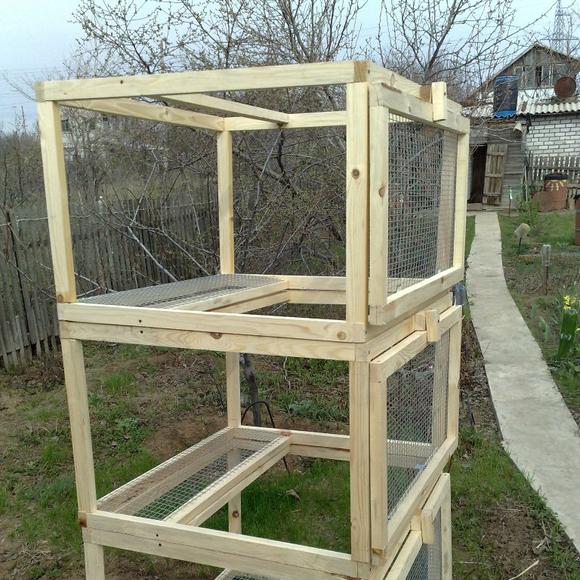
A reliable frame is designed to support two floors. To correctly carry out such a design for a rabbit cage, drawings must always be kept close at hand. Two-tier cages for rabbits have a "P"-shaped structure planning rule, represented by standard blocks fastened to each other with self-tapping screws.
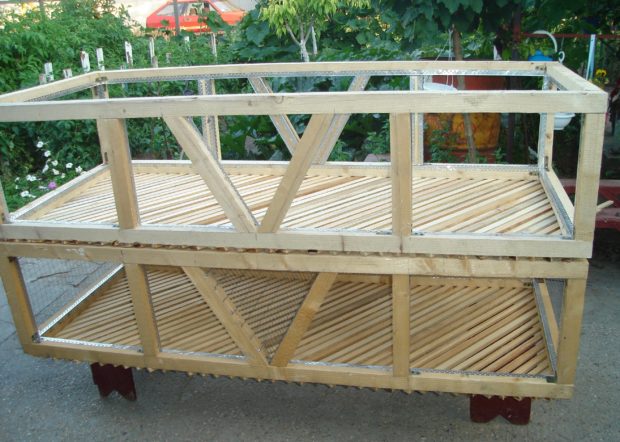
With such simple techniques, you can make cages for rabbits with your own hands, which, in terms of their reliability and comfort, will not be inferior to factory designs.
